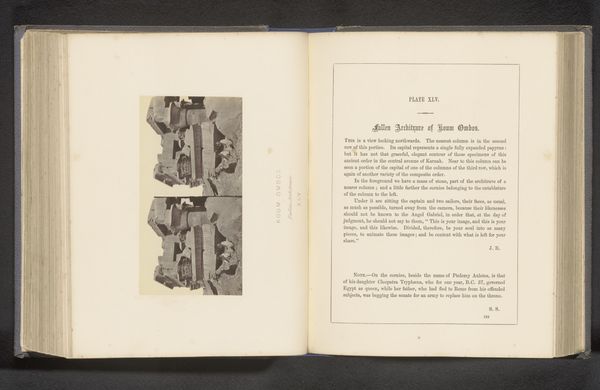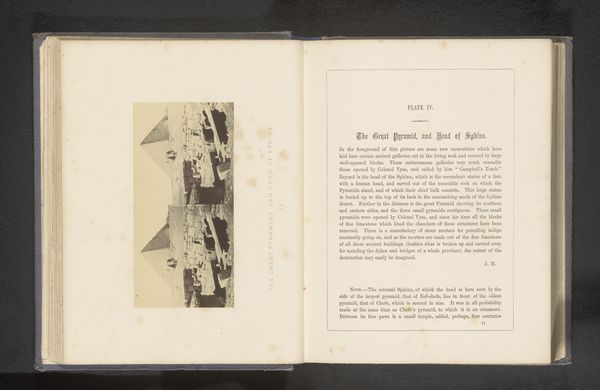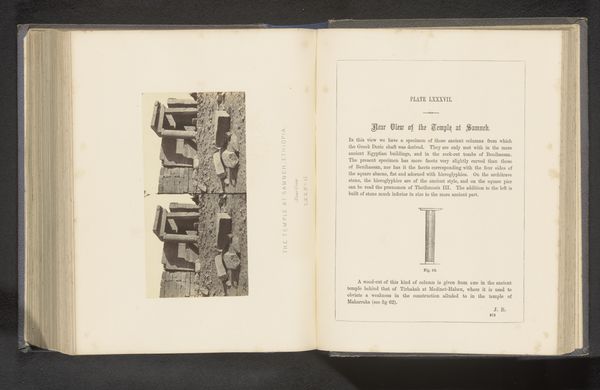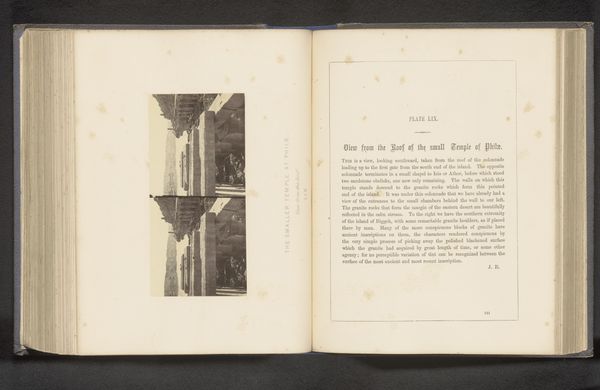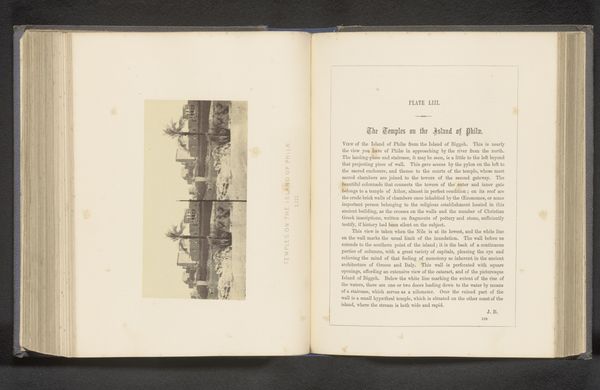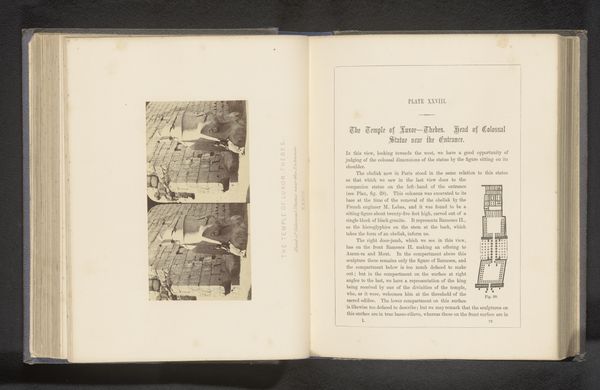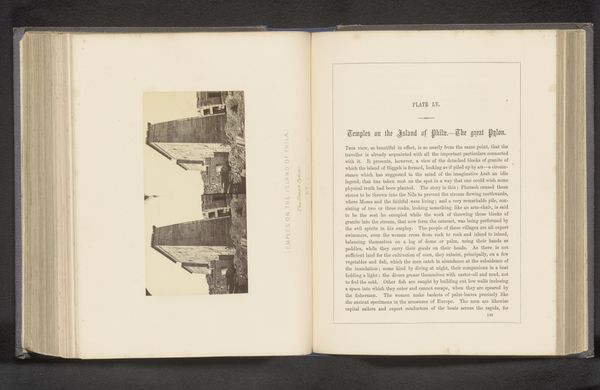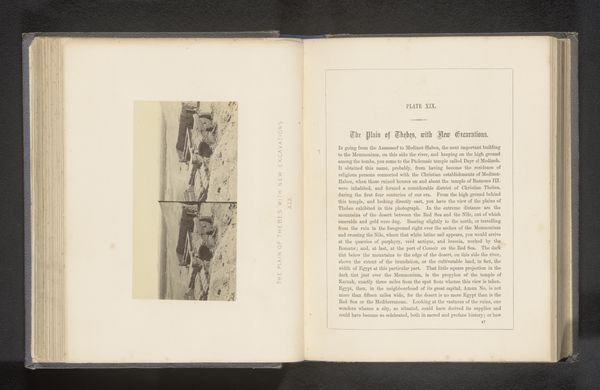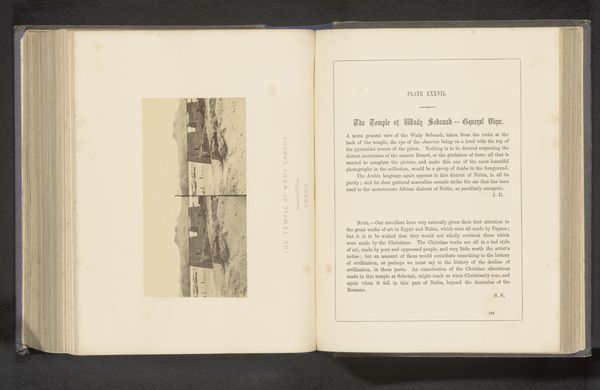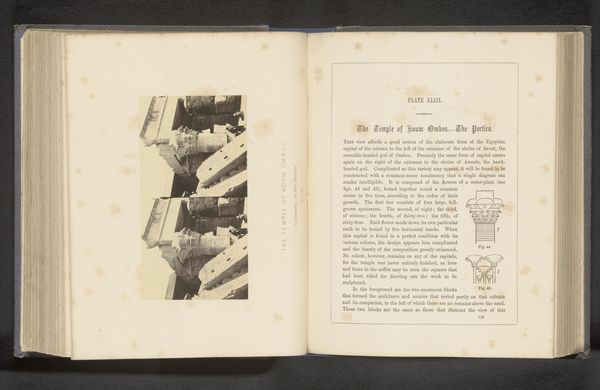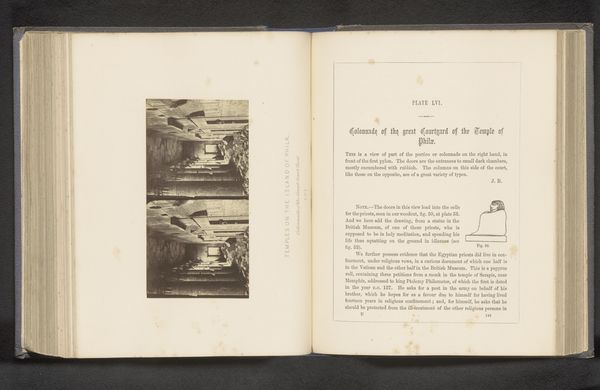
print, photography, albumen-print
#
aged paper
#
homemade paper
# print
#
sketch book
#
hardpaper
#
landscape
#
ancient-egyptian-art
#
photography
#
personal sketchbook
#
journal
#
fading type
#
ancient-mediterranean
#
orientalism
#
thick font
#
history-painting
#
albumen-print
#
historical font
#
columned text
Dimensions: height 72 mm, width 139 mm
Copyright: Rijks Museum: Open Domain
Curator: Here we have a fascinating page from an album, a study of the Luxor Temple obelisk, created before 1862 by Francis Frith. It resides in the Rijksmuseum. Editor: The way the sepia tones have aged gives it this incredible atmosphere, like I’m peering back into another time. Curator: Frith was a pioneering photographer who documented landscapes across the Middle East. This albumen print isn't just a photograph; it's part of a larger visual and textual record. Note the layout, the photograph on one side, with printed description on the other. This reflects a particular Victorian approach to knowledge and travel. Editor: Exactly, the print quality feels academic, clinical even. The paired texts and images, however, feel like a colonizer's gaze at ancient power. I mean, what narratives were crafted through the dissemination of these images? Curator: The images reinforced the colonial power dynamics by portraying distant lands and cultures for Western audiences. Frith profited significantly from selling these images, so how did his economic success influence the perception and preservation of the Egyptian antiquities he depicted? It wasn't merely about documentation, but commodification as well. Editor: The inclusion of detailed textual description emphasizes an obsession with the factual, seemingly objective information and ignores the political motivations behind the whole project. But whose voice is really missing from that "factual" record? The communities whose home this is? Curator: I think it’s important to think about how images such as this helped to shape the popular perception of Egypt, turning it into a land of exotic ruins ripe for exploration and appropriation. These works were undeniably instrumental in constructing and solidifying specific historical and cultural narratives, leaving a profound and lasting imprint. Editor: Looking closer makes me uneasy, seeing how power operates in the shadows, defining the lens through which we still see these places today. Curator: Indeed. It reminds us how crucial it is to scrutinize the origin and aim of what we encounter and see as the “past.”
Comments
No comments
Be the first to comment and join the conversation on the ultimate creative platform.


